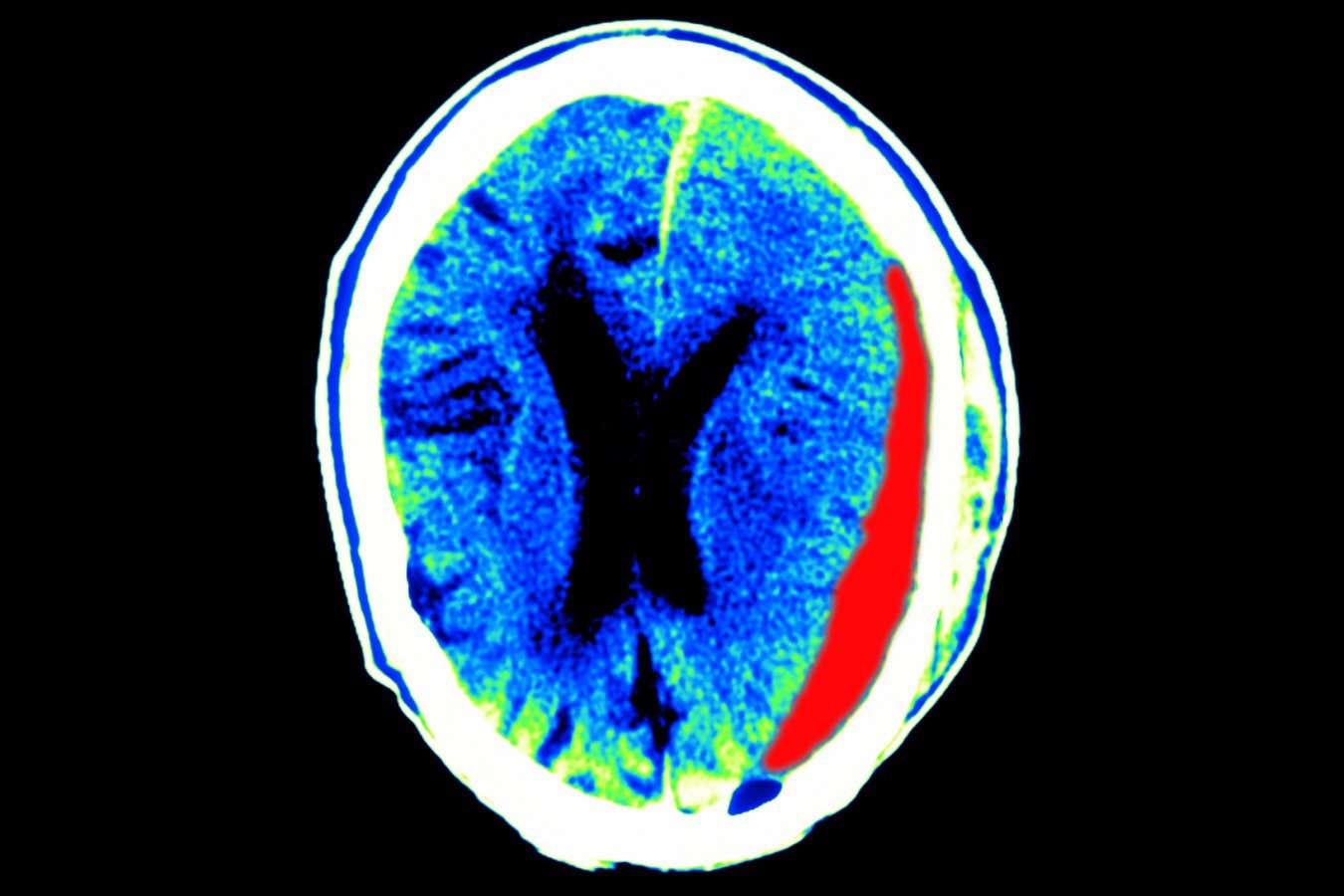After comparing people with brain injuries whose life support was continued with those who had it turned off, scientists calculated that around 40 per cent in the latter group may have made some recovery
By Moheb Costandi
16 May 2024
A subdural hematoma, where blood collects between the skull and the surface of the brain, which can occur after a head injury
Scott Camazine/Alamy
A substantial proportion of people with a traumatic brain injury who had their life support withdrawn may have survived and at least partially recovered, a study suggests.
Traumatic brain injuries can occur due to a forceful blow, a jolt to the head or an object entering the brain, such as a bullet. Although predicting an individual’s outcome can be difficult, some recover and gain at least partial independence months later. Even so, families are often asked to decide whether or not to withdraw life-sustaining treatment within days of a severe injury.
To learn more about the potential outcomes of such events, Yelena Bodien at Massachusetts General Hospital and her colleagues collected data on people who were on life support following a traumatic brain injury at intensive care units in the US over seven-and-a-half years.
Advertisement
Of these people, 80 had life support withdrawn, and their outcomes were compared with those of 56 people in the same situation who continued with the treatment, some of whom went on to regain a certain level of independence.
The researchers identified factors associated with the withdrawal of life support, such as the person’s age and sex. From this, they used an algorithm to calculate these people’s likelihood of recovery had their treatment been maintained.
These results suggest that 42 per cent of the people who had life support withdrawn may have survived and gained at least partial independence six to 12 months after the injury.
